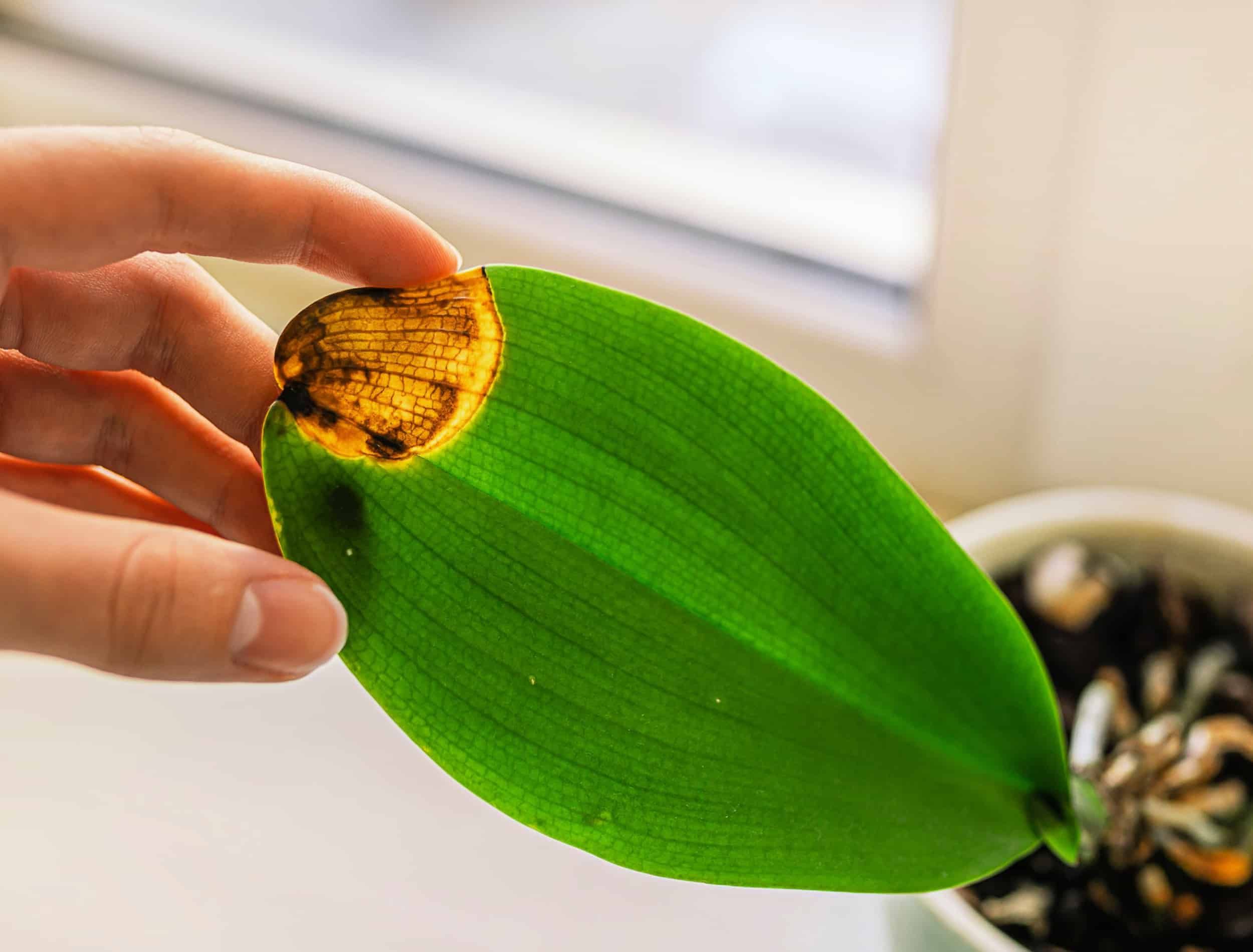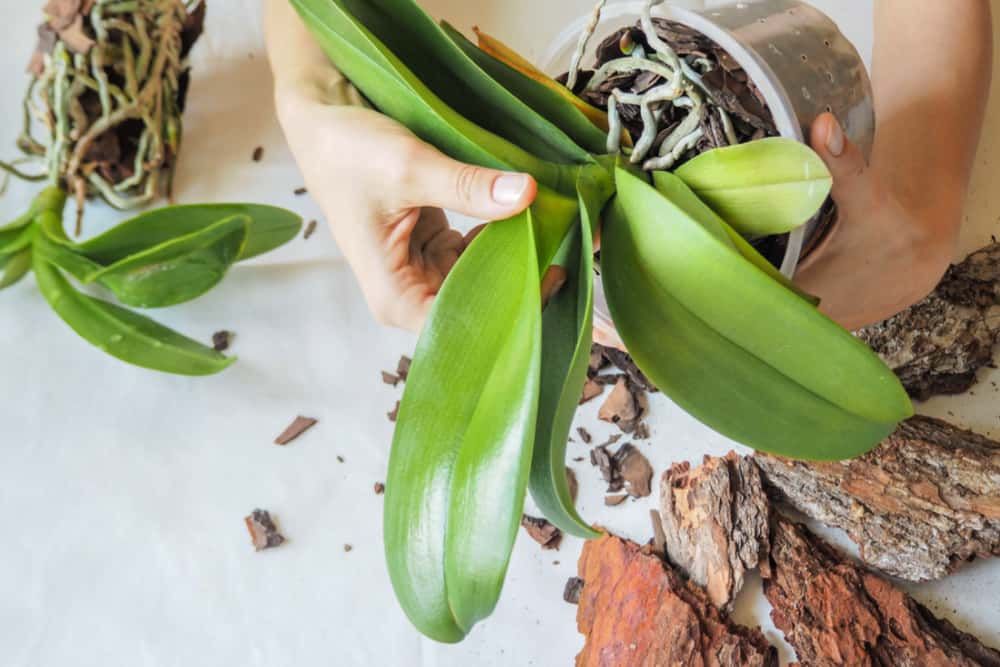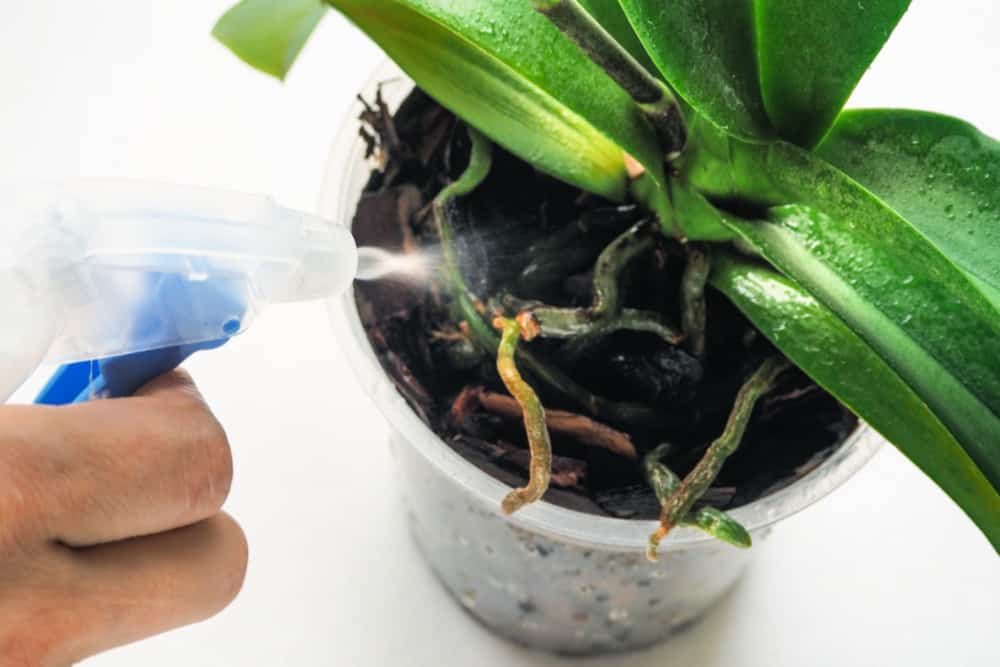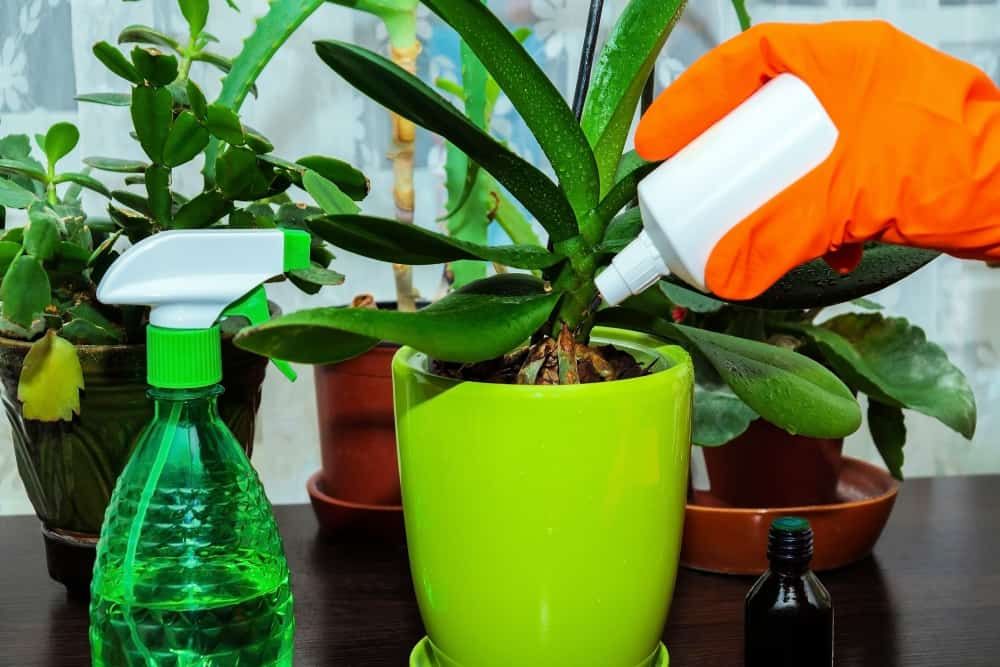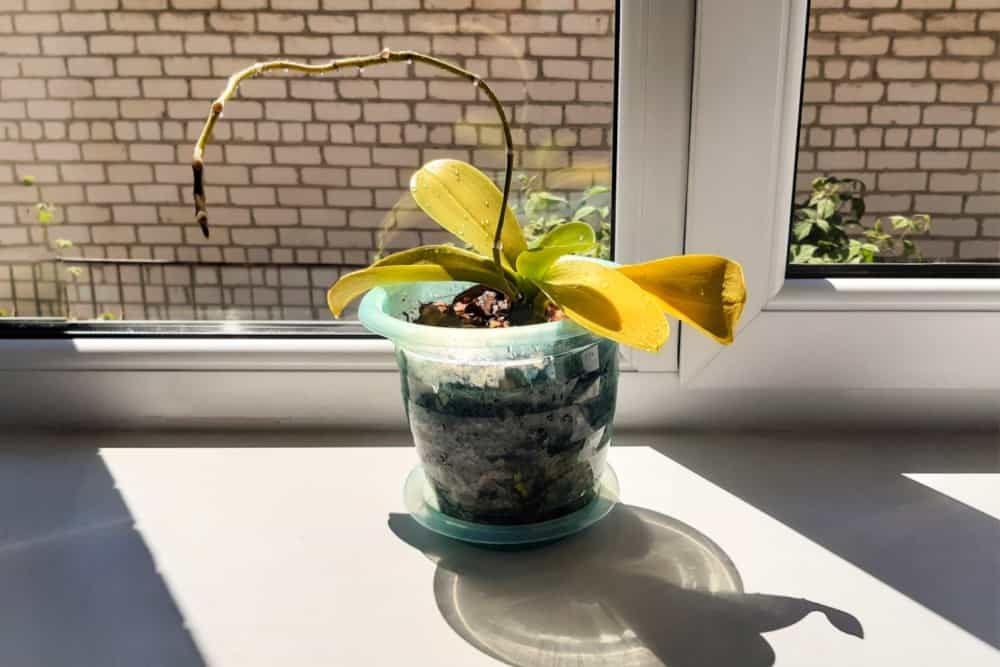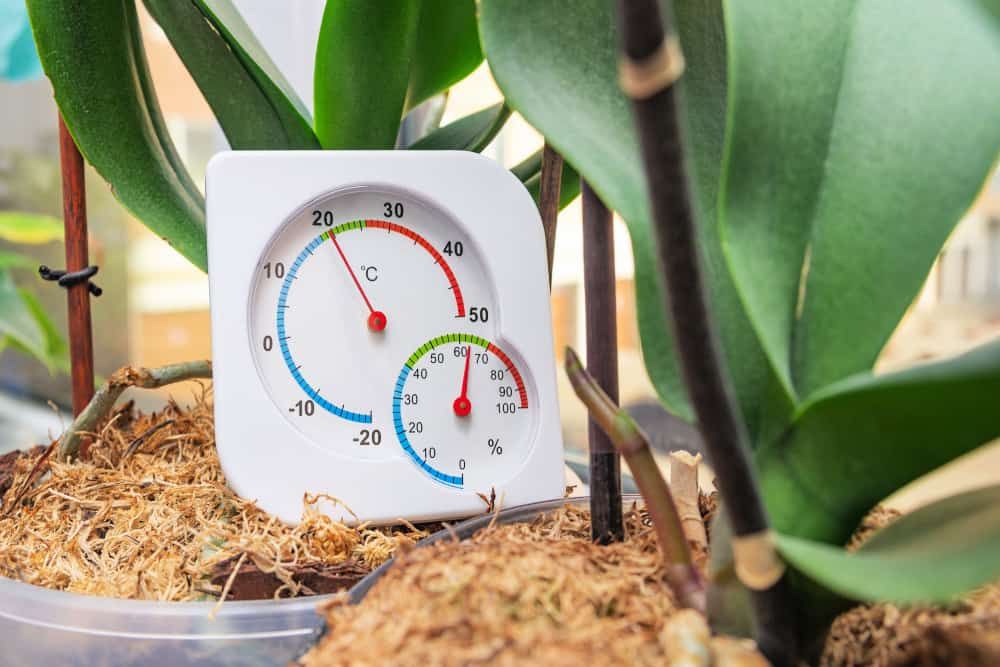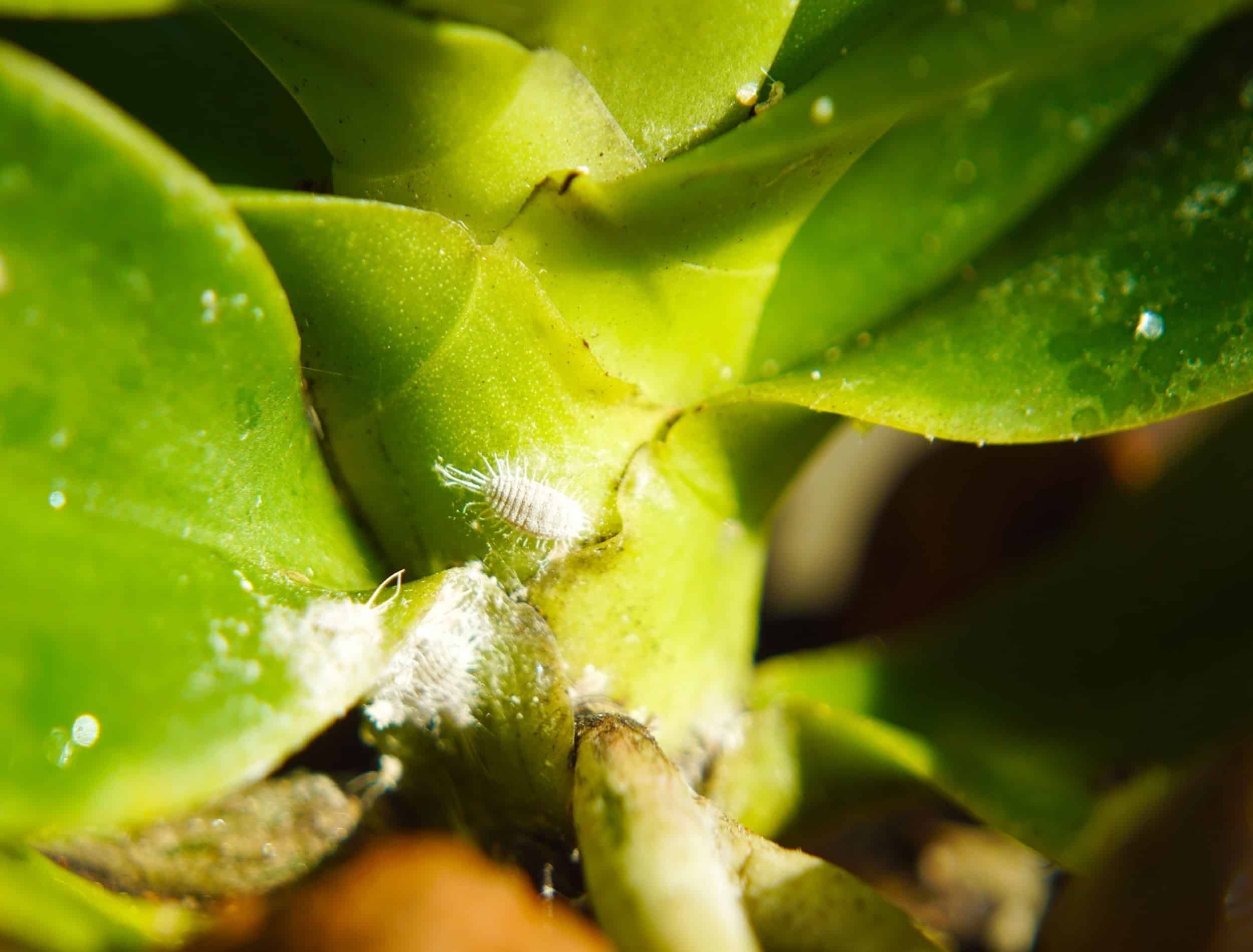Orchids make a beautiful addition to your growing list of houseplants. They're also easy to care for, and the stunning blooms are definitely worth writing home about. But, like all plants, orchids require the proper care techniques to grow and thrive. And if you've noticed yellowing leaves on your plant, there's a good chance it's a sign of distress.
But what exactly is affecting your plant and how can you deal with it? Check out this list of potential problems so you can address them ASAP and bring your plant back to full health.
Natural Plant Process
Image credits: Stanislav71 via Shutterstock
Orchids develop around one to three new leaves a year and many varieties drop leaves as they continue to grow. The mature leaves will begin to yellow as the plant uses its natural process to discard them.
There are two ways to tell if the yellowing leaves are part of the plant's natural process. First, ensure the yellow leaf is at the bottom near the root system of the plant. Second, check the root system to ensure it is green and healthy. If the plant continues to grow bigger, it may be time to repot.
If you rule out natural processes, move on to the next steps!
Watering Issues
Image credits: Stanislav71 via Shutterstock
Overwatering and underwatering can both harm orchid plants. Wrinkled leaves are usually a sign of dehydration, but the leaves may also begin to turn yellow if the plant is dying due to underwatering. Overwatering the plants also leads to yellow leaves because it causes root rot, which can kill the plant if you're not careful. Be sure to check the root system to ensure this isn't the case.
As a general rule of thumb, water your orchid plants once or twice a week during the growing season and every other week during the fall and winter. Remember that your climate and variety of orchid may affect how often you need to water.
Pro Tip: Make sure the hanging roots of your orchid get water, too! One way to do this is by placing your orchid pot in the sink and splashing water on them.
Nutritional Deficiencies
Image credits: VITALII BORKOVSKYI via Shutterstock
Yellow leaves can also be a sign of nutritional deficiencies in orchids. You should plant them in a soilless orchid potting mix consisting of organic materials such as peat moss, coco coir, bark, perlite, and vermiculite. Over time, the potting medium may break down and become too dense to provide adequate drainage. You can test the nutrient levels of the soil by testing its pH.
The lack of drainage and potentially compacted roots can also lead to nutrient deficiencies as they can stop the plant from soaking up water and absorbing nutrients. Following repotting rules, you should repot your orchid plants if their soil needs changing. You can also fertilize the plant lightly to provide it with the proper nutrients.
Too Much Light
Image credits: Pencil case via Shutterstock
Orchids prefer bright indirect light as too little or too much light may result in yellowing or damaged leaves. Exposing orchids to direct sunlight may actually cause sunburn, causing the leaves to yellow with black and brown spots and eventually, fall off. Too little light, on the other hand, can result in dark green leaves and a failure to flower.
The simple solution is to move the plant to a spot with better lighting, such as a north or west-facing windowsill, depending on your climate.
Humidity and Temperature Issues
Image credits: Yevhen Prozhyrko via Shutterstock
Orchids thrive in humidity levels around 40 to 70 percent and make a great addition to the bathroom. When it comes to temperature, orchid varieties are split into three categories based on their needs: warm, intermediate, and cool. The temperature tolerance between these flowers ranges from 55 degrees Fahrenheit to 90, so make sure you read up on your specific orchid. Anything under 50 degrees will cause the leaves to yellow.
You might feel compelled to try and keep your orchid warm at night since it's a tropical plant, but don't! Nightly shifts in temperature by 10 to 15 degrees is actually crucial for orchid growth. As photosynthesis occurs during the heat of the day, the cool temperatures allow it to focus on respiration. By doing this they can store their energy for the next day. This temperature shift also encourages blooms.
Temperatures and humidity levels that are too low can result in yellow leaves, so it's important to provide your plant with plenty of warmth and humidity! Do this by keeping it away from air conditioning units and regularly spritzing it with water.
Pests or Diseases
Image credit: Natalia van D via Shutterstock
Spider mites, scale insects, thrips, and mealybugs tend to make a home out of orchid plants. While you should constantly inspect your houseplants for pests, yellow leaves may be a sign that your plant is suffering from an infestation. Fortunately, there are plenty of simple and efficient ways to get rid of and prevent pests.
Yellow leaves may also be a sign of bacterial or fungal disease, which are often caused by overwatering. These diseases may be accompanied by brown spots or streaks. Depending on the disease, treat the plant accordingly by spraying it with a fungicide, removing the leaves. Also remove any dead roots and repot.
If It's Yellow, Don't Let it Mellow!
Yellowing leaves on an orchid plant aren't always cause for alarm. It's natural for leaves on a growing plant to fall off over time, especially if it's producing new leaves. But yellow leaves could also be a sign that something is wrong, whether that's issues with watering, lighting, temperature, pests, or even disease. So, it's crucial to inspect your plant and provide it with the proper care, paying attention to its needs.
Will you be using these tips to take care of your orchid plant? Share in the comment below!

